Subscribe to Zero-Sum Pfear & Loathing


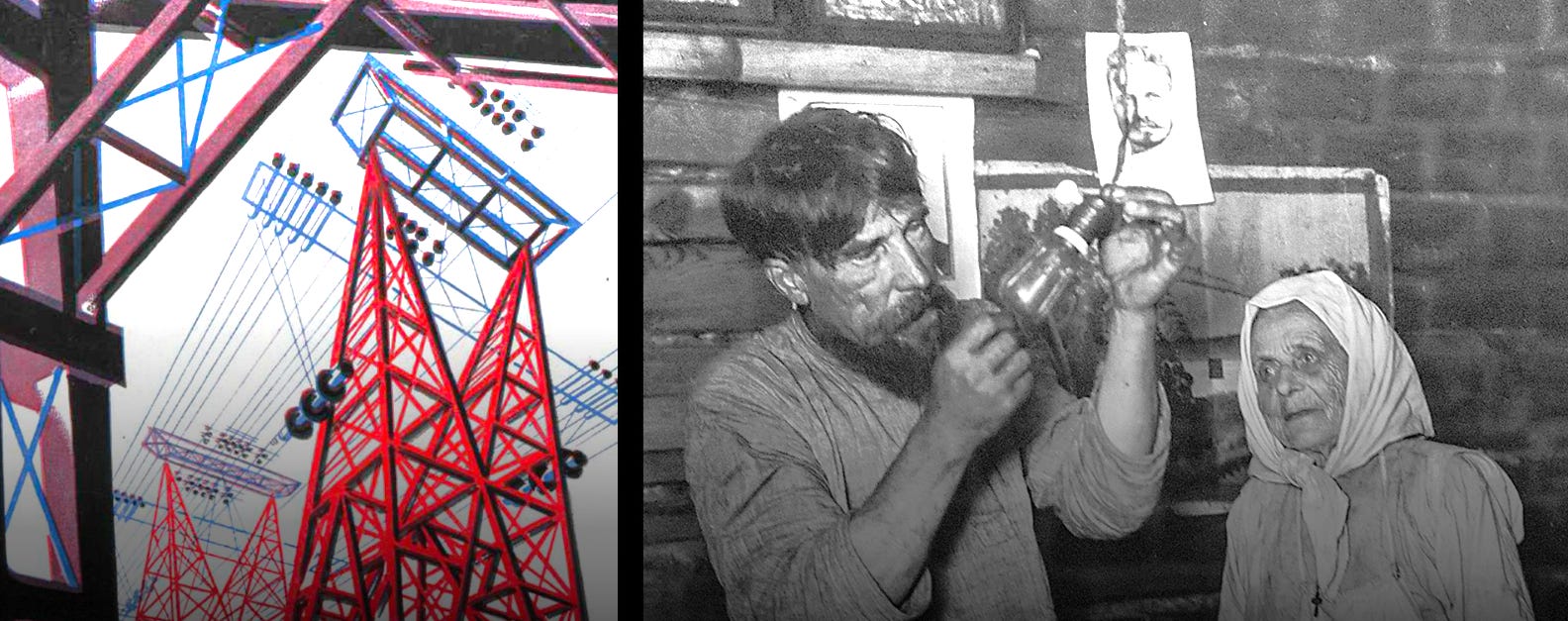
by Paul Cudenec | Apr 5, 2024
Anyone wishing to understand what lay behind the brutal political repression and totalitarian industrial slavery imposed by the Bolsheviks would do well to read the work of historian Antony C. Sutton, notably his book Wall Street and the Bolshevik Revolution. [73]
He shows, with solid evidence, that the communist seizure of power was encouraged and funded by financial interests outside Russia.
This is not to say that there were not genuine revolutionary forces at play in the country and that the tsarist regime would not have been toppled in any case.
But the specific role of the Bolsheviks was to seize power, crush the genuine popular revolt and ensure that Russia was turned into an authoritarian centralised state – under the ultimate control of these financial interests – which could then impose their Great Project.
This project was, of course, all about making money.
Communist Russia was regarded as a “golden opportunity” [74] in certain circles.
An enciphered telegram sent by David Francis, US ambassador in Petrograd (St Petersburg), a year before the revolution began, is very telling for a couple of reasons.
Firstly because he sent it to the State Department in Washington, DC, to be deciphered and forwarded to Frank Arthur Vanderlip, the chairman of the National City Bank in New York, thus indicating which power he was truly serving.
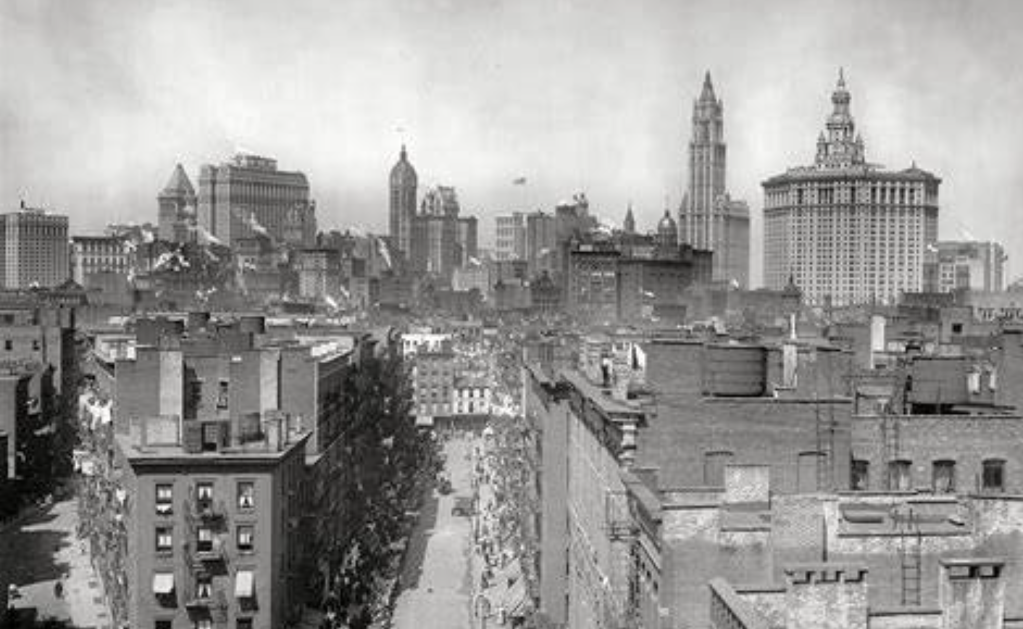
Secondly because of his message to the banker: “Opportunities here during the next ten years very great along state and industrial financing”. [75]
This wouldn’t have been the case if the genuine social movement, of which Voline was part, had won the day and managed to place power and wealth in Russia in the hands of the Russian people.
So the international bankers clearly had an important incentive in crushing any real revolutionaries and ensuring that their opportunity-providing placemen were firmly in charge.
Sutton in fact mentions Voline in his book and explains that “the betrayal of the Russian Revolution” which the latter witnessed first-hand was created by “the new powerbrokers of another corrupt political system… the ambitions of a few Wall Street financiers who, for their own purposes, could accept a centralized tsarist Russia or a centralized Marxist Russia but not a decentralized free Russia”. [76]
We are generally taught that there is a fundamental dichotomy between state control of industry and private control – state ownership of the kind exercised under “communism” would necessarily be to the disavantage of those who profit under “capitalism”, we are made to believe.
But the public-private model tested in Fascist Italy and Nazi Germany, and now championed by the likes of the WEF, should allow us to see through this illusion.
Like fascism, communism provided financiers with the authoritarian state muscle to impose their industrial development projects on people who would not otherwise have gone along with them.
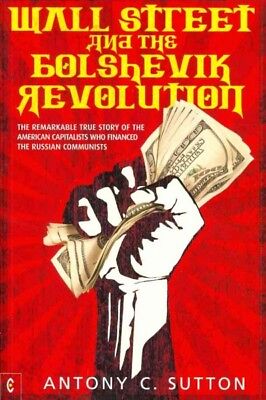
Sutton muses about the apparent contradiction of somebody like George Foster Peabody, deputy chairman of the Federal Reserve Bank of New York, being an enthusiast for government ownership of railways.
He argues: “Given the dominant political influence of Peabody and his fellow financiers in Washington, they could by government control of railroads more easily avoid the rigors of competition.
“Through political influence they could manipulate the police power of the state to achieve what they had been unable, or what was too costly, to achieve under private enterprise.
“In other words, the police power of the State was a means of maintaining a private monopoly… The idea of a centrally planned socialist Russia must have appealed to Peabody. Think of it – one gigantic State monopoly!” [77]
In 1922, the same year as they created their Gosbank central bank, the Bolsheviks formed their first international bank, known as the Ruskombank (Foreign Commercial Bank or the Bank of Foreign Commerce). It was headed by “Bolshevik Banker” Olof Aschberg and on its board, alongside representatives of the Soviet Union, sat tsarist private bankers and representatives of German, Swedish and American banks. [78]
On joining Ruskombank, Max May of Guaranty Trust stated that it was “very important” and that it would “largely finance all lines of Russian industry”. [79]
Sutton’s detailed research and analysis utterly explodes the myths entertained by communists about their relationship to both capitalism and fascism.
Take this statement, for instance: “Trotsky was able to generate support among international capitalists who, incidentally, were also supporters of Mussolini and Hitler”. [80]
But an element of which he was evidently unaware was the true identity of the financiers behind the funding of the Bolshevik beast, as well as of fascism.
Voline mentions in passing a treaty with London that “opened the doors of the country to British capital”. [81]
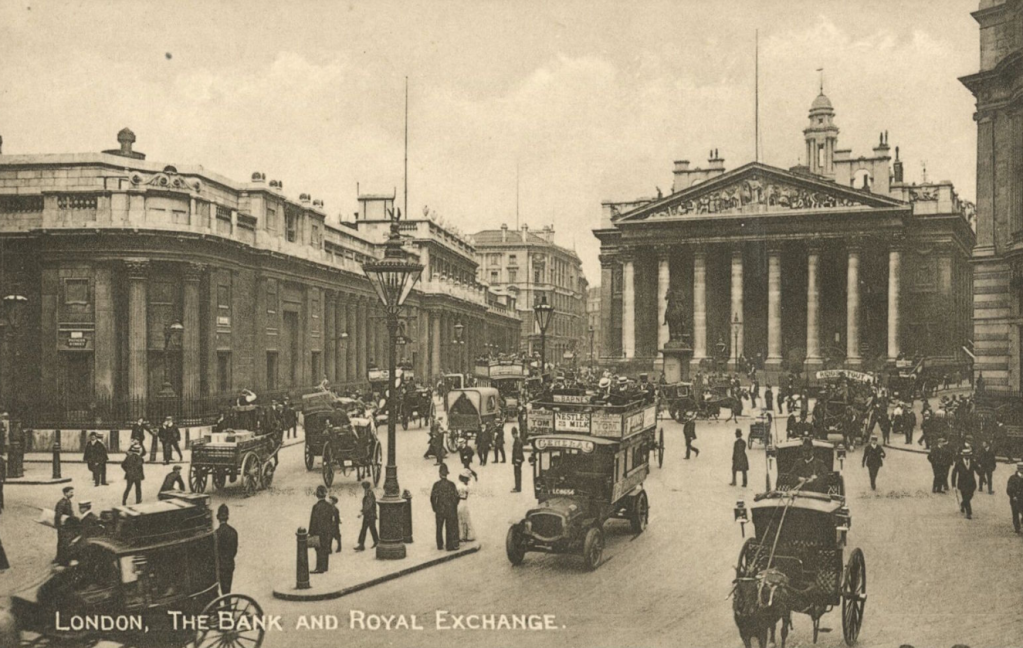
And Sutton himself provides a clue in his account of the formation of the Ruskombank, when he records: “The foreign banking consortium involved in the Ruskombank represented mainly British capital… The British government itself had already purchased substantial interests in the Russian private banks; according to a State Department report, ‘The British Government is heavily invested in the consortium in question’.” [82]
J.P. Morgan, the main Wall Street entity that Sutton links to the Bolsheviks, is in fact, as I set out in my booklet Enemies of the People, [83] a front for the Rothschild empire, in particular of its UK operation.
The Rothschilds needed a convincing front in the USA because the American public would not have been too pleased to learn that, despite the War of Independence, their country was still largely owned by the City of London.
Guaranty Trust Company – “Aschberg’s New York associate” [84] – was likewise a Morgan/Rothschild entity, as was the aforementioned National City Bank (the word “City” in all such US bank names being a reference to the City of London).
Sutton looks at these bankers’ duplicitous role in the First World War – a subject I have addressed in some detail elsewhere [85] – and concludes: “What is really important is not so much that financial assistance was given to Germany, which was only illegal, as that directors of Guaranty Trust were financially assisting the Allies at the same time.
“In other words, Guaranty Trust was financing both sides of the conflict. This raises the question of morality”. [86]
Financing both sides of a conflict, with utterly no regard for morality, is a notorious trademark of the Rothschild mafia.
Their familiar fingerprints can be seen all over Operation Bolshevik.
The bankers’ involvement in the Russian Revolution used the vehicle of a “Red Cross Mission” which was yet another spurious organisation hiding behind the mask of “humanitarianism”.
Sutton explains: “In World War I the Red Cross depended heavily on Wall Street and specifically on the Morgan firm.
“The Red Cross was unable to cope with the demands of World War I and in effect was taken over by these New York bankers. [87]
“In August 1917 the American Red Cross Mission to Russia had only a nominal relationship with the American Red Cross, and must truly have been the most unusual Red Cross Mission in history”. [88]
He reveals that all expenses, including those of the uniforms – the members were all colonels, majors, captains or lieutenants – were paid out of the pocket of William Boyce Thompson, director of the Federal Reserve Bank of New York! [89]
And, of course, Thompson’s interest did not have anything to do with the Red Cross’s usual activities.
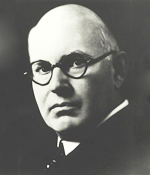
The Washington Post published a report on February 2, 1918, entitled: “GIVES BOLSHEVIKI A MILLION. W.B. Thompson, Red Cross Donor, Believes Party Misrepresented”.
This stated: “William B. Thompson, who was in Petrograd from July until November last, has made a personal donation of $1,000,000 to the Bolsheviks for the purpose of spreading their doctrine in Germany and Austria”. [90]
Sutton spells out the reality behind the Red Cross front: “The mission was in fact a mission of Wall Street financiers to influence and pave the way for control, through either Kerensky or the Bolshevik revolutionaries, of the Russian market and resources. No other explanation will explain the actions of the mission. [91]
“Thompson was interested in the Russian market and how this market could be influenced, diverted, and captured for postwar exploitation by a Wall Street syndicate, or syndicates. [92]
“Whether the Russian people wanted the Bolsheviks was of no concern”. [93]
Sutton identifies the central co-ordinating point of the communism-funding project as 120 Broadway in New York.
“Two of the operational vehicles for infiltrating or influencing foreign revolutionary movements were located at 120 Broadway: the first the Federal Reserve Bank of New York, heavily laced with Morgan [Rothschild] appointees; the second the Morgan-controlled American International Corporation”. [94]
Intriguingly, the 1915 skyscraper that is 120 Broadway, the Equitable Building, [95] today features a luxury rooftop Bankers Club and is owned by Silverstein Properties. [96]

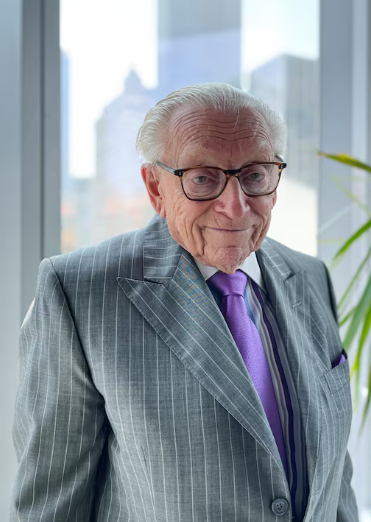
Property mogul Larry Silverstein was the man who bought the lease on the World Trade Center two months before 9/11 and later bagged a $4.55 billion pay-out, successfully arguing that two planes hitting the two towers amounted to two separate incidents for which he should be recompensed. [97]
Sutton also looks into the dubious role played by Raymond Robins, a wealthy businessman who, “for no observable reason”, [98] suddenly declared himself a socialist, backed the Bolsheviks and, according to French government documents, sent “a subversive mission of Russian Bolsheviks to Germany to start a revolution there” – this being the Spartacist revolt of 1918. [99]
He concludes: “There is considerable evidence, including Robins’ own statements, that his reformist social-good appeals were little more than covers for the acquisition of futher power and wealth”. [100]
One might add that this seems to be true of a certain “left” in general and indeed Sutton quotes Quigley when he states that in around 1910 “the Morgan firm [Rothschilds] decided to infiltrate the Left-wing political movements in the United States. This was relatively easy to do, since these groups were starved for funds and eager for a voice to reach the people. Wall Street supplied both”. [101]
Quigley goes on: “It was this group of people, whose wealth and influence so exceeded their experience and understanding, who provided much of the framework of influence which the Communist sympathizers and fellow travelers took over in the United States in the 1930’s.
“It must be recognized that the power that these energetic Left-wingers exercised was never their own power or Communist power but was ultimately the power of the international financial coterie”. [102]

Describing, in a rather cryptical way, “the relationship between the financial circles of London and those of the eastern United States which reflects one of the most powerful influences in twentieth-century American and world history”, [103] he then gets to the core of the issue.
“The two ends of this English-speaking axis have sometimes been called, perhaps facetiously, the English and American Establishments.
“There is, however, a considerable degree of truth behind the joke, a truth which reflects a very real power structure.
“It is this power structure which the Radical Right in the United States has been attacking for years in the belief that they are attacking the Communists.
“This is particularly true when these attacks are directed, as they so frequently are, at ‘Harvard Socialism’ or at ‘Left-wing newspapers’ like The New York Times and the Washington Post, or at foundations and their dependent establishments, such as the Institute of International Education.
“These misdirected attacks by the Radical Right did much to confuse the American people in the period 1948-1955 and left consequences which were still significant a decade later”. [104]
Sutton adds, for his part: “We suggest that the Morgan firm [Rothschilds] infiltrated not only the domestic left, as noted by Quigley, but also the foreign left – that is, the Bolshevik movement and the Third International”. [105]
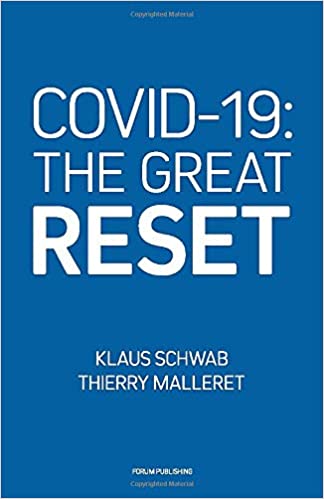
Ripples of the confusion mentioned by Quigley have lingered on today, in the age of the so-called Great Reset.
When some people notice the similarities between this 2020s authoritarian land-grabbing industrial project and that of the communists in Russia in the last century, they draw the conclusion that the Great Reset is “communist”.
This would seem to make no sense, given that Klaus Schwab’s WEF is a body representing the world’s biggest corporations and financial interests and, even though he has been pictured with a bust of Lenin behind him, he is hardly a “communist” in the generally-understood sense.
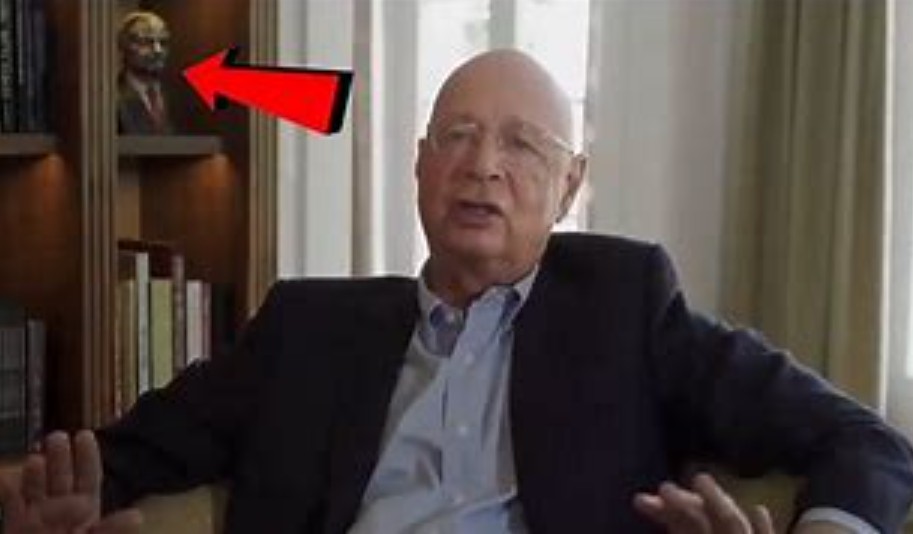
However, once we realise that communism in Russia was promoted and funded by the same mafia who are now behind the WEF, the fog of confusion quickly clears.
As we have seen, the real aim behind installing communism in Russia was to impose, by means of its totalitarian central state, a massive wave of highly profitable industrial development.
Sutton traces the start of the project to the setting up of the American International Corporation (AIC) at 120 Broadway in 1915 and the frustration, reported by Frank A. Vanderlip of National City Bank, that “there was not much more railroad building to be done in the United States”. [106]
Rail infrastructure was, as I have previously described, a major element in the Rothschilds’ empire.
Operation Bolshevik worked rather well in this respect. Soviet Railways, which started operations in 1922 under the direct control of the communist state, was “the backbone of the Soviet Union’s economy” and “greatly upgraded and expanded the Russian Imperial Railways to meet the demands of the new country”. [107]
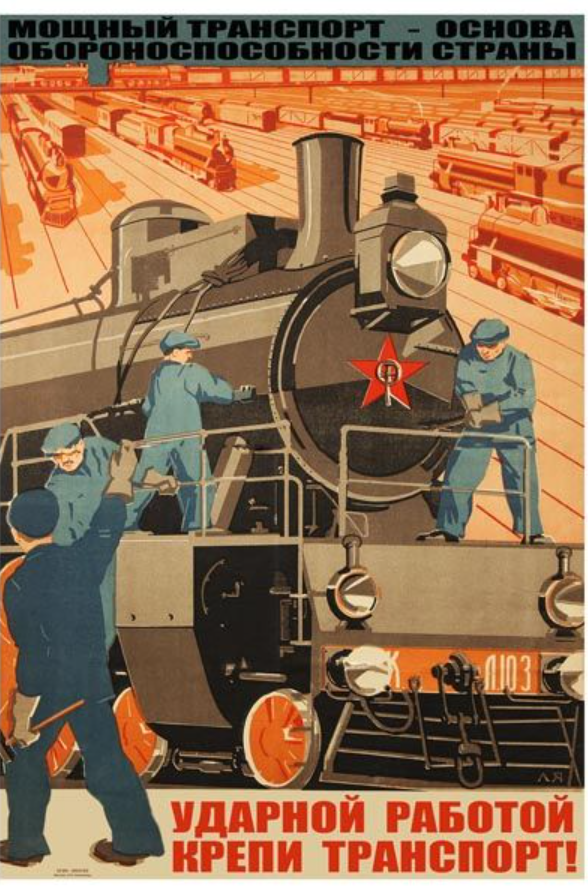
One of the directors of AIC was C.A. Coffin, chairman of General Electric, whose executive office was at 120 Broadway and, coincidentally, was chairman of the cooperation committee of the American Red Cross! [108]
The Rothschilds also had a massive vested interest in the global expansion of electrification, dominating as they did the world’s supplies of copper, the main material required for the infrastructure.
As one website [109] enthusiastically relates, “the electrification of Soviet Russia came about unlike anywhere else in the world” and allowed the banker-backed Bolsheviks to bulldoze traditional Russian life.
“They turned a backward agrarian country into an industrial economy in a matter of years”.
Propaganda presented Lenin as a mystical symbol of electrification and the communist New Normal/Order.
“The electric light that now lit up every home became known as ‘Ilyich’s lamp’, which brought enlightenment (quite literally) and a new way of life to the masses”.
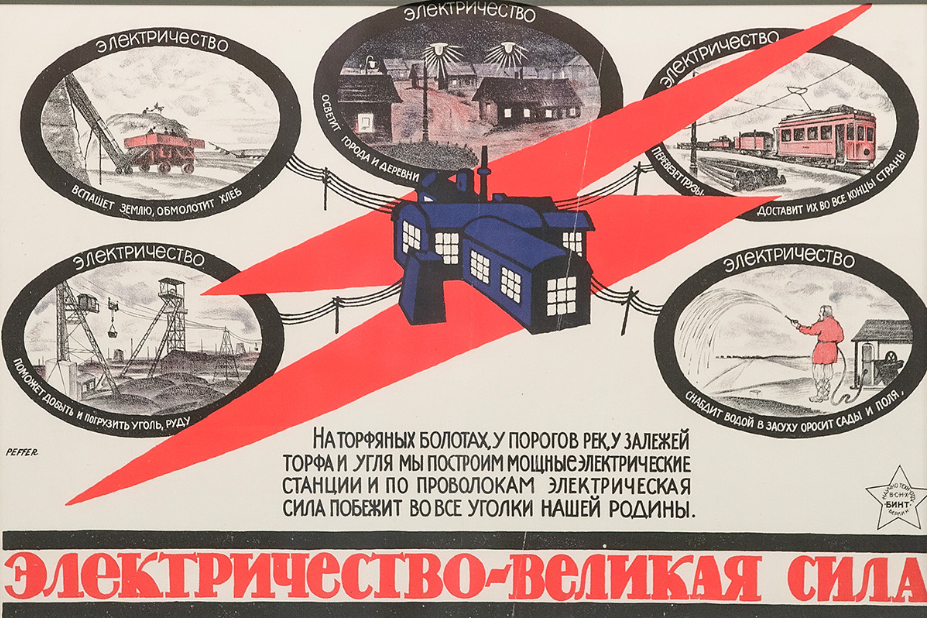
With the “golden opportunity” of a “massive State monopoly” spurring them on, the gang in New York built a private vehicle “to exploit Russian markets and the earlier support given the Bolsheviks”, explains Sutton.
“A group of industrialists from 120 Broadway formed the American-Russian Industrial Syndicate Inc. to develop and foster these opportunities”. [110]
Financial backing for the new firm came from the likes of the Guggenheim Brothers, also of 120 Broadway, previously associated with William Boyce Thompson.
“Guggenheim controlled American Smelting and Refining; and the Kennecott and Utah copper companies”, [111] Sutton notes.
In 1918 The American League to Aid and Cooperate with Russia was set up, with the involvement of Coffin of the General Electric Company, and the talk was of “economic assistance” for Russia. [112]
Lenin spun the same line when he told the Tenth Congress of the Russian Communist Party in March 1921 that the country would require “the assistance of capital”. [113]
But in truth the communist regime was not so much being assisted by capital as being used by it as a tool to squeeze untold profit from the Russian people and their land.

As Sutton says: “The gigantic Russian market was to be converted into a captive market and a technical colony to be exploited by a few high-powered American financiers and the corporations under their control”. [114]
A final instructive detail is that, with their usual racketeering cynicism, the financial mafia backing the Bolsheviks also, at the very same time, whipped up fear of communism in the USA!
Writes Sutton: “The financial circles that were supporting the Soviet Bureau in New York also formed in New York the ‘United Americans’ – a virulently anti-Communist organization predicting bloody revolution, mass starvation and panic in the streets of New York”. [115]
Pointing to the involvement of Morgan/Rothschild entity Guaranty Trust in this duplicity, he says it “raises, of course, serious questions about the intentions of Guaranty Trust and its directors”. [116]
I can only agree with him that “spreading propaganda designed to create fear and panic while at the same time encouraging the conditions that give rise to the fear and panic” points to “utter moral depravity”. [117]

[73] Antony C. Sutton, Wall Street and the Bolshevik Revolution (West Hoathley: Clairview, 2016).
[74] Sutton, p. 156.
[75] Sutton, p. 54.
[76] Sutton, p. 19.
[77] Sutton, p. 100.
[78] Sutton, p. 60.
[79] Sutton, p. 63.
[80] Sutton, p. 36.
[81] Voline, la fin de Cronstadt et l’Insurrection en Ukraine, p. 29.
[82] Sutton, p. 61.
[83] Paul Cudenec, ‘Enemies of the People: The Rothschilds and their corrupt global empire’, https://winteroakpress.files.wordpress.com/2024/04/enemiesofthepeople-.pdf
[84] Sutton, p. 63.
[85] Paul Cudenec, ‘A crime against humanity: the Great Reset of 1914-1918’, https://winteroak.org.uk/2022/10/14/a-crime-against-humanity-the-great-reset-of-1914-1918/
[86] Sutton, p. 67.
[87] Sutton, p. 72.
[88] Sutton, p. 73.
[89] Sutton, p. 73.
[90] Sutton, p. 83.
[91] Sutton, p. 87.
[92] Sutton, p. 97.
[93] Sutton, p. 87.
[94] Sutton, p. 127.
[95] https://gothamtogo.com/the-historic-equitable-building-shines-a-spotlight-on-its-history/
[96] https://www.silversteinproperties.com/commercial-office-space-nyc/120-broadway
[97] Even “fact-checkers” admit this, although they like to wrap it up in weasel words that suggest it’s not true. See https://www.snopes.com/fact-check/wtc-terrorism-insurance/
[98] Sutton, p. 84.
[99] Sutton, p. 91.
[100] Sutton, p. 84.
[101] Quigley, p. 594, cit. Sutton, p. 127.
[102] Quigley, p. 604.
[103] Quigley, pp. 605-06.
[104] Quigley, p. 606.
[105] Sutton, p. 127.
[106] Sutton, p. 128.
[107] https://en.wikipedia.org/wiki/Railway_system_of_the_Soviet_Union
[108] Sutton, p. 130.
[109] https://www.rbth.com/science-and-tech/334322-electricity-soviet-bolshevik-russia
[110] Sutton, p. 137.
[111] Sutton, pp. 136-37.
[112] Sutton, p. 156.
[113] Sutton, p. 157.
[114] Sutton, p. 173.
[115] Sutton, p. 123.
[116] Sutton, p. 163.
[117] Sutton, pp. 163-64.

The first three parts of this essay were Pseudo-resistance, Lies and Repression and Industrial slavery – the concluding part will be:
Flawed and despotic
Alternatively, the whole thing can be downloaded as a free pdf booklet here.